- Home
- Aimée Thurlo
Pale Death Page 3
Pale Death Read online
Page 3
“I’ll talk to the deputies and see what they’ve got.” Diane went to join the deputy photographing footprints leading from the river to the crime scene, and Lee walked toward the bodies.
Lee recognized Arthur Cooper from the Office of the Medical Investigators, a member of New Mexico’s statewide network of investigators. OMI people went to the scene of any suspicious death, and sent bodies to Albuquerque for autopsies at their UNM Hospital facility. Cooper looked up at Lee and nodded, handing him two pairs of latex gloves to wear.
The man worked the Four Corners, and knew most Navajos didn’t like to touch the dead, or anything that had touched the dead—hence two pairs of gloves, one over the other. “State Patrolman Hawk, this is Dr. Wayne. He works with the Justice Department criminal forensics division.”
“We’ve met. Victor,” Lee acknowledged the tall, slender man in his early sixties. He had sharp eyes and a firm jaw that reminded Lee of a bulldog. Wayne was an expert on all forensics matters—at least he thought he was—and wasn’t slow to express his views.
Dr. Wayne had insisted at their first meeting, about a year ago, that Lee call him Victor. It was all part of the good ole boy strategy Wayne used to get any additional information, gossip, or off-the-cuff remarks that might help him on the case. It worked for the fictional TV cop, Columbo, but not for Victor—at least not when dealing with him or Diane.
Victor smiled, despite the presence of a cold, pale, attractive, and very dead young woman on the rocky ground just three feet away. Lee took one glance at Lynette Alderete’s face, then couldn’t help sneaking a look at Diane.
“Ah, you notice the resemblance too, Officer Hawk. They could have been sisters. And Special Agent Lopez knew the victim, she tell you that?” Dr. Wayne said offhandedly, enjoying the expression on Lee’s face. “Coincidence?”
Lee refused to let Victor get to him. The man had bugged him and Diane for weeks following the deaths of those vampires near Fort Wingate last year, and called on them again after those incidents in Albuquerque. He fought the urge to pull the doctor aside and treat him to a vivid show-and-tell about vampires. That might have shut Victor up and gotten him out of their hair permanently.
“Why don’t you take a look at the victims and tell me what you think did this or, to be more precise, what kind of person, Officer Hawk,” Dr. Wayne said, standing. “Meanwhile, Arthur, maybe you should start making some calls and getting the authorizations for me. I want to begin autopsies on these victims this afternoon.”
Cooper turned toward Lee so the fed couldn’t see, and rolled his eyes. “I’ll get started right away, Dr. Wayne.”
Lee worked hard not to smile as he nodded to both men and walked away. The Navajo officers had moved farther away, and were now walking toward the bridge in the distance. Maybe they were going to search the far bank—their turf.
He stepped closer to the body, making sure not to touch any of the splattered blood on the rocks, stooped down, and moved the blanket off the victim completely. Directing his gaze at the feet, he noticed the woman’s shoes. The leather pumps were dirty and badly scuffed—months of wear put in them probably within a few hours of harsh use. They were still moist from the water. Her ankles had been rubbed raw, probably from running across the desert in street shoes.
Bruises and scrapes ran up her body, and her slacks and blouse had been torn. In places, pieces of branches and brush had snagged and remained. Enormous black and blue marks on her upper arm indicated she’d been grabbed with an iron grip. In the center of the bruises bones protruded through broken flesh. Whoever had killed her had also broken her arm with two hands, snapping the bones like a twig.
Lee felt Dr. Wayne was watching him, so he showed no emotion as he conceded silently that Ms. Alderete had been killed by someone incredibly strong. Maybe a vampire. Of course, the holes in her neck encouraged such speculation, as did the wooden stake that pinned her to the ground through the left side of her chest. But the wounds on her neck were pure theatrics. His guess was that the holes by her jugular had been made with either a nail or a piece of wire.
Lee covered the body back up carefully, then stood and stared right at Dr. Wayne, who couldn’t see his eyes anyway through the dark glasses. “She ran, and was hunted down after being pursued for some distance. She either entered the water here and came back out, or maybe she crossed to this point from the opposite bank just before being attacked. Either way, she was killed at this spot by someone very strong and brutal. Her arm was broken before she died. Hopefully, she’d already passed out before the wood splinter finished her off.”
“Stake. She was killed by a wooden stake. And with the marks on the neck as well, what does that suggest to you?” Dr. Wayne asked. His tone suggested that he wanted Lee to be the one to bring up the obvious.
“Halloween isn’t for a few months, so don’t expect any X-Files-flavored speculation, Victor. We have a very strong, angry person with a propensity for mass murder. You know as well as I do that everything here has been staged. Special Agent Lopez will have access to any profiling that might lead to the appropriate terminology. Mutilating victims is the kind of thing sick people do to get attention. Fifteen minutes of fame—at somebody else’s expense.”
Lee turned to the OMI man, Cooper. “Are the two other victims like this?”
Cooper nodded. “They’re impaled by similar wooden stakes, and they have the same kind of wounds on their necks—not really bite marks, though.” He glanced over at Dr. Wayne, who shrugged.
Cooper continued. “Their shoes are wet and their pant legs are damp, indicating they’d all gone into the river, though only to a depth of about two feet. It’s very shallow around here, so they might have come all the way across. They either decided to make a stand here, or whoever was chasing them finally caught up. They had the crap beaten out of them too. There are lots of defensive wounds, bruises, scratches, minor cuts, broken fingernails—like that. The men were pinned to the ground, like the woman. Whether they were already dead by then, well, that’s not my call. The stakes were the last touch, though.”
Cooper was very matter of fact about it. Working in the Four Corners, where murders were often the result of beatings, he’d probably seen worse.
“What about IDs?” Lee asked. “Agent Lopez knew the woman. She’s a physician and her last-known position was as an instructor at the UNM medical school. Were these men scientists or doctors too? Coworkers of hers?”
“We’ll move the bodies in a few minutes and check their wallets,” Cooper said. “We were able to search their front pockets, and found coins, ChapStick, chewing gum, and two sets of vehicle keys. One is to a Beemer, the other a Dodge. Both keys look new, so these guys must have been making good money. And Agent Lopez found a set of keys in the woman’s pocket. There are officers checking for any abandoned vehicles in the area. The older deputy over there has the details,” Cooper added.
Diane was talking to the younger deputy, but looked up just as Lee turned in her direction. When she diverted her eyes to check something behind him, he followed her gaze. The Navajo officers who’d gone down the river had crossed over and were starting to look for tracks and evidence on the far bank. One of the officers shouted something in Navajo that Lee recognized. Tracks. He’d expected as much.
He looked back at Diane and she nodded, so Lee got the OMI man’s attention once more. “Arthur, let me know if there’s anything else. Agent Lopez and I are going to try and backtrack from here.”
Cooper nodded.
“Let me—us—know what you find, Officer Hawk,” Dr. Wayne asked. It was more like an order, though, not that Lee cared. Wayne had no authority over him.
“Sure,” Lee replied, wondering why Dr. Wayne was involved and what kind of interference he could expect from the man. With any luck, Wayne would be on his way back to Washington within a day or two.
Noticing Diane was already halfway to the bridge, Lee had to jog to catch up to her. With no traffic on the rural bridge at the m
oment, they walked across quickly, then reversed their direction and angled back toward where the Navajo officers were scrutinizing the ground beside the river.
“Well?” Diane whispered loudly.
“Well, what?”
“Come on. Did a vampire do this?”
“If it wasn’t for the corny horror touches, I’d say yes, almost certainly. Taking on three adults at night after running them to ground, beating them all to death at about the same time in hand-to-hand combat, breaking arms like sticks, then pinning each one to the ground … very few human fighters could do that. But for a vampire, it would be relatively simple, especially if none of his opponents had been trained in hand-to-hand.”
“Of the vampires I’ve met, some were good and some were bad. Ultimately, it’s their character that determines how they choose to use their abilities. Could we be dealing with one who’s insane, despite an ability to self-heal? A vampire mass murderer or serial killer could be extremely hard to catch—and destroy.” Diane watched his face carefully. He’d begun to open up to her a lot more emotionally, and she could read him quite well now.
“I think you’ve already made up your mind, or you wouldn’t have called me this morning, Diane. But for what it’s worth, I think you’re probably right. By the way, who discovered the bodies?”
“An old Mexican man who works at a farm near here. Apparently he was looking for a horse that got out, saw the bodies, and ran all the way back home. He called the sheriff and told the deputy I spoke with that a chupacabra had killed these people. Some kind of goat creature from Mexican folk stories. The old man looked like he was having a heart attack, so the EMTs took him away.”
“I’ve heard the stories of chupacabra. Goat sucker, I think is a close translation. Wonder if we’re about to find out about another kind of vampire—whether we like it or not,” Lee said.
They were getting close to where the Navajo officers were crouched, checking footprints or signs, so she whispered, “Got enough sunblock?”
Lee nodded. “I hope so.”
“Officer Hawk,” one of the Navajo officers, clad in the tribe’s tan uniform, said, nodding to Lee. “Ma’am,” he added, glancing at Diane. He then pointed to the ground beside the waterline, which had receded slightly since earlier that morning.
“Please tell me what you think happened over here,” Diane said, trusting the officers to know their field craft as well as her and Lee. It would save time.
The two other Navajo cops looked up almost in unison. Maybe they weren’t used to being asked for help from other agencies—other than with crowd control or traffic.
“Those three died over there, but they crossed the river here first.” He pointed to three sets of prints, one smaller than the others and obviously belonging to Dr. Alderete. “The length of stride tells us they were running.”
Diane nodded, but Lee got down on his knees to check out a particular set of prints—boots, it looked like.
“There was one person chasing them—the one wearing the boots.” The short, barrel-chested officer crossed his arms in front of him. “He cut them off before they could reach the bridge, forcing them to turn and enter the water.”
Lee turned and looked in the opposite direction. A bluff ran along the river valley for miles, and few buildings were visible, even to him. Who had they been running from, and what had happened to put them in the path of the killer? Lee looked toward an arroyo not far from the river that led up to the cliff side. He thought he could see skid marks where they’d slid down a steep spot.
The officer saw where Lee was looking. “Good eye. That’s where we plan to look next. It looks like they came down the bluff, then to the river farther downstream and hid there for a while. One of my officers found a place where they stood behind some willows not far from here. But they must have been seen or heard by the one after them, because they broke cover and ran to this spot.”
The tracks showed the three had stuck together, probably not a good idea because it made them easier to track—and catch. If their hunter was a vampire, they’d have been better off scattering and hope he or she couldn’t get them all before daylight. Darkness itself wouldn’t have helped, only good, solid cover, and there wasn’t much of it around here south of the river.
The distance between individual boot prints revealed that the person tracking the three also was running, keeping the three from reaching the bridge by cutting them off and herding them toward the river, as the officer had said.
They were already up on the bluff, moving toward several low hills beyond when Lee noticed a sand-colored, one-story stucco building constructed into one of the hillsides. The tracks weren’t leading in that direction at the moment, but he suspected that was probably only due to the terrain.
The Navajo officer in the lead stopped, seeing what was ahead as well. He turned and waited for the other Navajo officers to catch up. They spoke in Navajo, their voices low, but Lee could hear what they were saying despite being fifty yards away.
The building was some kind of federal agency structure, and the locals were kept away by private, uniformed guards. Five vehicles were in a small parking area, and though Lee noticed there were outside security lights, there was no tall fence with the usual strands of barbed wire at the top.
“What’s that building?” Diane asked the officers. She was closer to them, and he’d kept back, not wanting to challenge their authority on the Navajo Nation though he was a state police officer with jurisdiction here as well.
“The sign says it’s a federal air quality research center,” the spokesperson for the Navajo policemen said. “The tribe leaves them alone, and the staff comes and goes at all hours. I don’t know any more than that.”
Lee looked at a set of instruments on the roof that might be sensors. “Kind of a big building—out here all by itself. Where’s the security fence? The feds—no offense, Agent Lopez—usually have a big one with barbed wire.”
“There are guards here, at least three at a time, so I hear,” the Navajo cop replied. “But they rarely come outside. They’re big guys. But no guns, right?” He looked at one of the other Navajo cops, who shrugged.
Lee looked at Diane. Usually security guards protected the outside from intruders. What would they be guarding that kept them mostly inside? He could see Diane was curious too.
“Well, let’s find out if the murder victims came from here, or if anyone who works in there might have seen or heard something,” Diane said.
“Go ahead, ma’am,” the first cop said. “We’ll keep following the trail.”
Lee stuck with Diane, and they quickly arrived at the front entrance. There were no windows in the flat-roofed, sturdy structure, which looked more like a bunker than a lab. It reminded Lee of that Albuquerque base where the nukes had been stored.
The sign on the steel door confirmed the facility as an air quality research center, but the locks were state of the art, electronic, and solid-looking, with a keypad to enter a code number. “Why go to all that trouble with security, then stick a rock in the door to keep it open?” Lee pointed to the baseball-sized rock wedged at the bottom.
“Yeah, and it’s dark inside,” Diane said, looking through the opening. “Hello. FBI. I have some questions.”
She reached for the handle, but Lee grabbed her hand. “Hold on. This doesn’t look right. There’s water all over the floor in there, and I see exposed wires in the way.” Lee took a closer look. “Those are bare wires. It might be a booby trap.”
Diane reached into her pocket and brought out a small, powerful flashlight and directed it to shine through the three-inch-wide opening.
“The wires run up to the door, but from this angle, I can’t see where they’re connected.” She looked down on the floor again. “But there must be a half inch of water on the floor. There’s a lot of glass too. Looks like somebody broke one of those big drinking water dispensers.”
“Water—bare wires—broken glass. Let’s back up a step and think a
bout this. What’s the address here, anyway?” Lee wondered, looking around for a mailbox.
“Post office box something, I’d guess, unless there’s a mailbox down at the highway. Thinking of giving them a call?” She brought out her cell phone.
“Check and see if you can get a number. If someone’s alive inside, they might be able to reach a phone. If they’re not inside now …”
“Then some of the cars in that parking lot belong to the dead people down at the river,” Diane said, finishing his thought. She noticed one of the Navajo officers standing in the parking lot. “Could you start running the tags on those vehicles and get the owners’ names for us?” she shouted.
The officer nodded, then grabbed the radio off his belt and started to work.
“Good idea,” Lee said, glancing at Diane. Spotting a small tree limb on the ground that still had a fork where a branch had been, Lee fashioned it into a crude hook. “Diane, got a latex glove I can borrow?”
“I see what you have in mind.” She tossed him a glove, he slipped it on, then took hold of the branch. “Stand way back, in case there’s more to this we can’t see.”
Lee hooked the notch in the branch to the door edge, then used the piece of wood to pull the door open. As the door swung back, wires taped to the inside of the door were yanked loose and dropped to the floor, landing in the water. There were sparks, a loud buzz, then the acrid smell of burning rubber and insulation filled the air.
Lee held the door open and looked inside. The room, more of a foyer with a second, closed door leading farther into the building, was spartan, with a coat rack, a stand for the water bottle, a calendar on the wall, and a hand-lettered sign that said “Security Is Your Responsibility.”

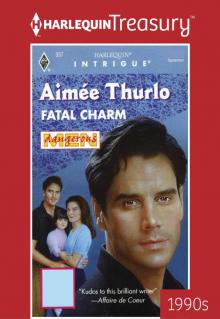 Fatal Charm
Fatal Charm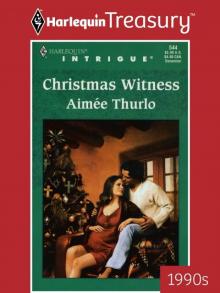 Christmas Witness
Christmas Witness Blood Retribution
Blood Retribution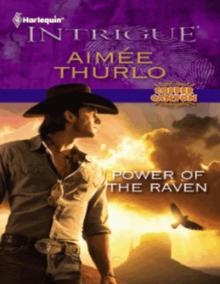 Power of the Raven
Power of the Raven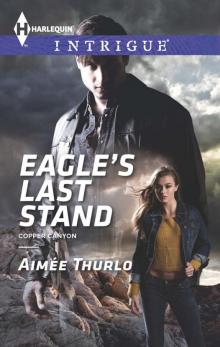 Eagle's Last Stand
Eagle's Last Stand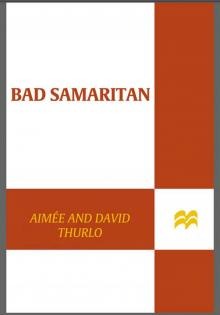 Bad Samaritan
Bad Samaritan Navajo Justice
Navajo Justice Undercover Warrior
Undercover Warrior Wind Spirit: An Ella Clah Novel (Ella Clah Novels)
Wind Spirit: An Ella Clah Novel (Ella Clah Novels)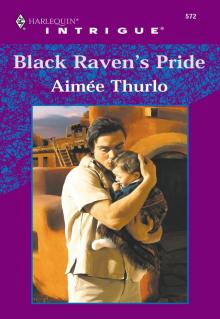 Black Raven's Pride
Black Raven's Pride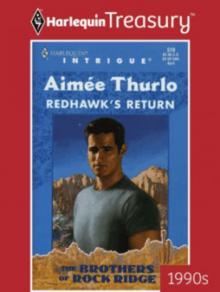 Redhawk's Return
Redhawk's Return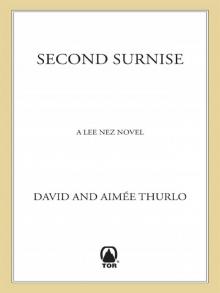 Second Sunrise
Second Sunrise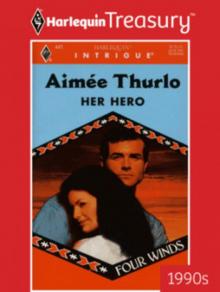 Her Hero
Her Hero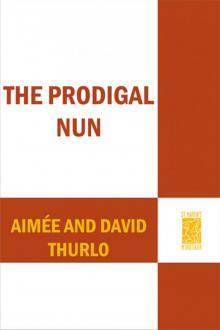 The Prodigal Nun
The Prodigal Nun Her Destiny
Her Destiny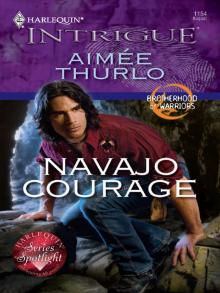 Navajo Courage
Navajo Courage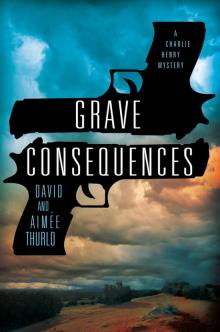 Grave Consequences
Grave Consequences Homespun Christmas
Homespun Christmas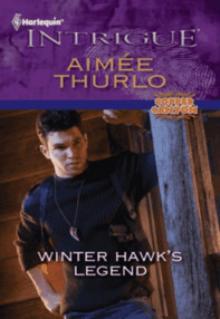 Winter Hawk's Legend
Winter Hawk's Legend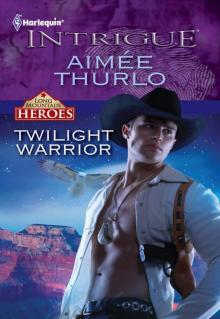 Twilight Warrior
Twilight Warrior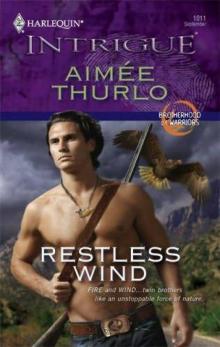 Restless Wind
Restless Wind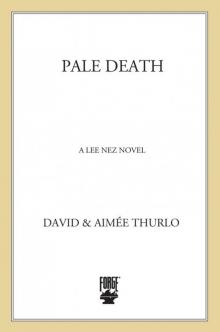 Pale Death
Pale Death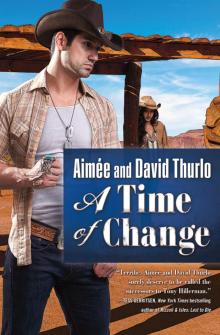 A Time of Change
A Time of Change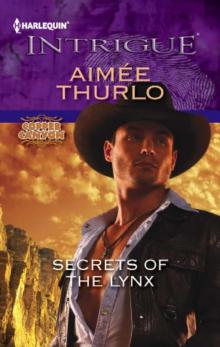 Secrets of the Lynx
Secrets of the Lynx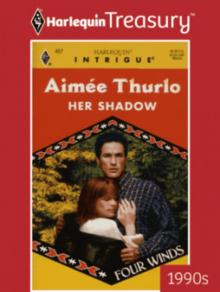 Her Shadow
Her Shadow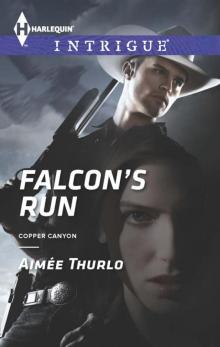 Falcon's Run
Falcon's Run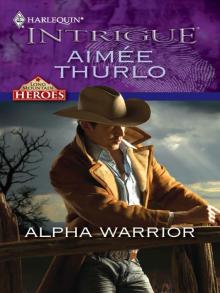 Alpha Warrior
Alpha Warrior When Lightning Strikes
When Lightning Strikes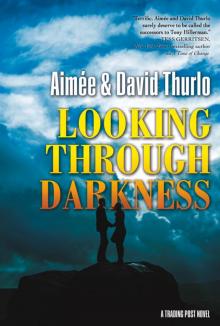 Looking Through Darkness
Looking Through Darkness